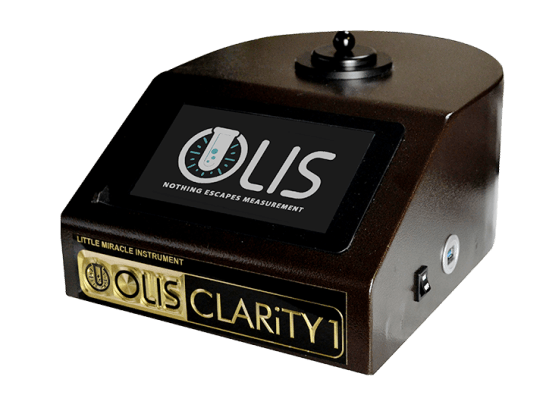Things about Circular Dichroism
Things about Circular Dichroism
Blog Article
The Circular Dichroism Diaries
Table of ContentsCircularly Polarized Luminescence for BeginnersAll About SpectrophotometersThe Greatest Guide To Circularly Polarized LuminescenceThe smart Trick of Circularly Polarized Luminescence That Nobody is Talking AboutWhat Does Uv/vis Mean?

Although spectrophotometry is most commonly used to ultraviolet, visible, and infrared radiation, contemporary spectrophotometers can question broad swaths of the electro-magnetic spectrum, consisting of x-ray, ultraviolet, noticeable, infrared, and/or microwave wavelengths. Spectrophotometry is a tool that depends upon the quantitative analysis of molecules depending on how much light is taken in by colored substances.
Rumored Buzz on Uv/vis
A spectrophotometer is frequently used for the measurement of transmittance or reflectance of options, transparent or opaque solids, such as sleek glass, or gases. Numerous biochemicals are colored, as in, they absorb noticeable light and for that reason can be measured by colorimetric procedures, even colorless biochemicals can frequently be transformed to colored substances ideal for chromogenic color-forming reactions to yield substances suitable for colorimetric analysis.: 65 Nevertheless, they can likewise be created to determine the diffusivity on any of the noted light varieties that typically cover around 2002500 nm utilizing different controls and calibrations.
An example of an experiment in which spectrophotometry is used is the decision of the balance constant of a service. A certain chain reaction within a solution may occur in a forward and reverse instructions, where reactants form items and items break down into reactants. At some point, this chemical response will reach a point of balance called an equilibrium point.
See This Report on Uv/vis/nir
The quantity of light that passes through the service is a sign of the concentration of particular chemicals that do not allow light to go through. The absorption of light is because of the interaction of light with the electronic and vibrational modes of molecules. Each type of particle has an individual set of energy levels connected with the makeup of its chemical bonds and nuclei and hence will take in light of particular wavelengths, or energies, resulting in unique spectral residential or commercial properties.
Using spectrophotometers covers numerous scientific fields, such as physics, products science, chemistry, biochemistry. spectrophotometers, chemical engineering, and molecular biology. They are widely used in lots of markets consisting of semiconductors, laser and optical production, printing and forensic evaluation, in addition to in labs for the research study of chemical compounds. Spectrophotometry is frequently used in measurements of enzyme activities, decisions of protein concentrations, decisions of enzymatic kinetic constants, and measurements of ligand binding reactions.: 65 Eventually, a spectrophotometer is able to figure out, depending upon the control or calibration, what substances are present in a target and precisely how much through computations of observed wavelengths.
This would come as a service to the formerly developed spectrophotometers which were not able to soak up the ultraviolet properly.
Examine This Report on Circular Dichroism
It would be discovered that this did not provide acceptable outcomes, for that reason in Model B, there was a shift sites from a glass to a quartz prism which permitted much better absorbance results - UV/Vis (https://www.pearltrees.com/olisclarity1#item574664694). From there, Model C was born with a change to the wavelength resolution which ended up having three units of it produced
It irradiates the sample with polychromatic light which the sample absorbs depending on its properties. Then it is sent back by grating the photodiode variety which spots the wavelength area of the spectrum. Given that then, the development and execution of spectrophotometry devices has actually increased immensely and has become one of the most innovative instruments of our time.

Spectrophotometers Fundamentals Explained
Historically, spectrophotometers utilize a monochromator consisting of a diffraction grating to produce the analytical spectrum. The grating can either be movable or repaired. If a single detector, such as a photomultiplier tube or photodiode is utilized, the grating can be scanned stepwise (scanning spectrophotometer) so that the detector can measure the light strength at each wavelength (which will represent each "action").
In such systems, the grating is fixed and the strength of each wavelength of light is measured by a different detector in the selection. In addition, most modern-day mid-infrared spectrophotometers utilize a Fourier change technique to obtain the spectral info - https://www.callupcontact.com/b/businessprofile/Olis_Clarity/8903776. This technique is called Fourier change infrared spectroscopy. When making transmission measurements, the spectrophotometer quantitatively compares the fraction of light that travels through a recommendation option and a test service, then digitally compares the strengths of the two signals and calculates the portion of transmission of the sample compared to the referral standard.

Report this page